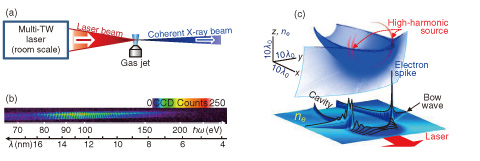
Fig.5-14 New regime of high-order harmonic generation by relativistic laser focused onto gas jet target
Bright X-ray sources are necessary for fundamental research and applications in the life sciences, material sciences, nanotechnology, and other fields. The ultimate performance requires temporally and spatially coherent X-ray pulses that are compressible to the shortest durations, focusable to the tiniest spots, and capable of producing fine interference and diffraction patterns. Two broad classes of bright X-ray sources are available, those based on large-scale accelerators (synchrotrons, X-ray free-electron lasers) and those based on compact lasers (e.g., laser plasma X-ray emission, plasma-based X-ray lasers, atomic high-order harmonics, and betatron sources). The great advantages of the laser-based sources are their accessibility for university-scale laboratories and their ultrashort pulses with durations from picoseconds down to <100 as (10-16 s). However, because of fundamental limitations, it has been overwhelmingly difficult to achieve laser-based bright coherent X-ray sources with keV and especially multi-keV photon energies. Our aim is to develop a new generation of such sources to create new fields of fundamental research and applications.
We discovered a new regime of high-order harmonic generation by high-power (10-200 TW) relativistic irradiance (>1018 W/cm2) femtosecond lasers (~30-50 fs) focused on gas jet targets, as shown in Fig.5-14(a). Comb-like spectra with hundreds of even and odd harmonic orders (Fig.5-14(b)), reaching a photon energy of 360 eV, including the “water window” spectral range, were generated by either linearly or circularly polarized pulses from the J-KAREN (KPSI, JAEA) and Astra Gemini (CLF, RAL, UK) lasers. A 120 eV harmonic contained up to 4 × 109 photons. Using particle-in-cell (PIC) simulations and mathematical catastrophe theory, we introduced a new mechanism of harmonic generation by sharp, structurally stable, oscillating electron spikes at the joint of the wake wave and bow wave boundaries, as shown in Fig.5-14(c).
Our compact bright coherent X-ray source can be built on a university-lab-scale repetitive laser and accessible, replenishable, and debris-free gas jet target. Importantly, the photon energy and number of photons are scalable with the laser power. This will affect many areas of fundamental research and applications requiring a bright X-ray/extreme ultraviolet source for pumping, probing, imaging, or attosecond science.
We acknowledge the financial support from the Japan Atomic Energy Agency (JAEA) (Research and Development Adjustment Funding for Exploratory Research, “Relativistic extreme ultraviolet harmonics from underdense plasma,” 2009) and the Japan Society for the Promotion of Science (JSPS) [KAKENHI Grant-in-Aid for Young Scientists (B) No.23740413, “New high harmonic generation mechanism,” 2011].